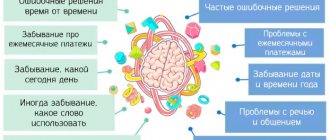Currently, psychologists offer many techniques for improving one’s abilities, finding inner harmony and choosing a special path to happiness. Neurobics, art therapy, coaching, mnemonics, Hellinger constellations, socionics and many other areas. One of these, incredibly popular and at the same time controversial, is NLP - neurolinguistic programming (not to be confused with neurolinguistics).
On the one hand, his techniques are actively used in almost all spheres of modern life. On the other hand, it is harshly criticized, considered an ordinary guide to manipulating people. So what is it really?
What it is
NLP is a direction in psychotherapy and practical psychology that uses verbal and non-verbal behavior of a person in order to achieve the desired result from him. For example, with the help of neurolinguistic programming, parents can teach their child order or punctuality, teachers can improve the learning efficiency of pupils and students, managers can force the buyer to purchase a product. In this case, forms of speech, eye movements, body postures, and memory are used.
NLP was developed back in the mid-twentieth century by J. Grinder and R. Bandler, but it has gained maximum popularity in our days. Officially, this direction is recognized as parascientific, since the effectiveness of the techniques, firstly, has not been proven, and secondly, is not always ethical from a moral point of view.
Many scientists believe that NLP is nothing more than the art of manipulating people through their own behavior.
Ways to avoid manipulation
Specialists in this field take advantage of a person’s temporary weaknesses (chronic fatigue, lack of attention, lack of motivation, subconscious fears, tension, neuropsychic exhaustion, complexes).
Fraudsters can easily find out information about your moral and physical condition from social networks. This is the best way to virtually study a person’s subconscious and begin to manipulate it. To protect yourself, it is not at all necessary to learn a lot of techniques and techniques.
It is enough to comprehend your inner world, strengths and weaknesses, feel your personal “I”, and only then will you program your own thoughts, set the tone for events and create a life scenario.
How it works
A person cannot perceive the world around him objectively, since he passes it through his own sensations (visual, auditory, olfactory), through the prism of acquired experience, personal beliefs and principles. Some people cannot live without church, others openly hate religion. Some are looking for a job that pays more, while for others it is more important that they like it. Some people like external beauty in people, others are delighted with the mental abilities of the interlocutor.
According to NLP, if you take into account all the above points and understand how a particular person passes information through himself and what is of particular importance to him, using certain techniques, you can achieve anything from him. But first, painstaking work must be done with beliefs and physiological characteristics.
If a manager persistently persuades a church-going grandmother to buy goods with demonic symbols, he will fail. It is necessary to offer an alternative option in time so that the purchase turns out to be pleasant for her and brings benefits to the company. This is where NLP techniques such as emotionally meaningful words and creating positive expectations come into play.
If an employee sits in a closed position (arms and legs crossed), it is difficult to demand increased productivity. But, having mastered the mirroring method, you can open the pose and talk more naturally.
Model of correct goal setting “SMARTEF”
A huge role in the process of achieving goals is played by the ability to correctly formulate and determine the desired result. Simply put, in order to change anything in life, you need to have a clear idea of what you specifically want. It is the SMARTEF technique that helps to determine and formulate the result properly. Compliance of a goal with SMARTEF criteria greatly increases the likelihood of its implementation. The goal should be:
- Specific (you must take into account all the details);
- Measurable (you must be clearly aware of all the indicators of the moment when the goal is achieved);
- Attractive (the goal must correspond to your beliefs and values, motivate you);
- Realistic (you must know for sure that the goal is achievable and what you will need to achieve it);
- Time-bound (you must clearly set a time frame for achieving the goal);
- Environmental friendliness (you must consider your goal in global terms, and also realize the secondary benefits of achieving/not achieving it);
- Positive wording in the present tense (when setting a goal, you must take into account special wording parameters).
We have already touched on the SMARTEF technique in our lesson “Anchoring, Performance and State Management”. If you wish, you can return to it or study the method in more detail here.
3
Basics
Where to start learning neurolinguistic programming? There are basic, basic techniques that were developed half a century ago by J. Grinder and R. Bandler and continue to be improved to this day. First you need to master them theoretically, so that you can then learn to apply them in practice.
1. Subjective experience: a person’s past, which has a huge influence on him.
2. Presuppositions - semantic components of NLP:
- the map is not yet the territory;
- consciousness, like life, is a systemic process;
- positive intention is the basis of any behavior;
- rapport (building trusting relationships);
- feedback, not defeat;
- and many others.
3. Representational systems: how a person receives information mainly from the outside (visual, auditory, kinesthetic and discrete images).
4. Metamodels and metaprograms.
5. Milton models: empty information that a person fills in himself in accordance with his beliefs, desires, and principles.
Access Keys: A single thing or phrase can force a person to take an action.
These are the basic theoretical principles of NLP. Without mastering them, achieving results in practice will be extremely difficult. You can find their detailed descriptions in popular science literature (the list is given below).
Reframing (reshaping position)
The goal of this speech strategy is to turn the situation around and force a person to look at the problem differently.
The simplest type of reframing is one-word. Suitable for refuting limiting statements, softening criticism and comments. Replace the unwanted word with a synonym with the desired emotional connotation. And now the former comrade is no longer stupid, but naive; The lady from the accounting department is not pushy, but demanding.
I have a negative attitude towards the substitution of concepts: it does not reflect the situation and does not help in resolving it. If a child deliberately howls at the entire plane, it is unlikely that the mood of passengers will improve if the mother calls him “energetic” rather than spoiled and capricious.
Another type of reframing is grouping. It is divided into “unification” and “separation”. In the first case, the problem is globalized to the level of the crowd (“I’m not the only one who got a D in math, but the whole class”), in the second, it is divided down to the particulars (“What exactly is your misfortune? Not money, a dog or a house?”).
In Lateral Shift you need to use analogies to re-evaluate a situation. Take a negative problem and find an analogy that has new or expanded implications.
The problem has been replaced by a similar one in another area. NLP practitioners believe that as soon as a person finds a solution to a similar situation, the problem will be resolved
You can read more reframing techniques in the book “NLP-2: Generation Next” by Robert Dilts and Judith Delozier.
NLP techniques that produce results
After mastering the theory, you can move on to practice. Recommended techniques for beginners that, when used correctly, work flawlessly:
- mirroring (exact repetition of movements, facial expressions, poses, intonations of the interlocutor);
- rapport through the pronoun “we”;
- three "yes";
- pattern break;
- switching attention;
- reframing;
- anchoring;
- thought virus;
- adjustment, etc.
It remains to be seen how exactly each technology from this list works in specific situations.
Mechanisms of perception of manipulation
Long before the discovery of the principles of human programming, it was noted that people differ in their types of perception into conditioned categories.
- Visuals - gain access to surrounding information mainly through visual images;
- Auditory learners - understand the world better through sounds;
- Kinesthetics - perceive the world through sensations and touches;
- Digitals are people-computers for whom the most important thing is internal dialogue and thinking.
After several techniques, the manipulator will determine the type that has the highest priority for you and will adjust the techniques to pin you down.
Areas of application
In different areas of life, NLP suggests using different methods of influencing a person.
In sales
The modern market is oversaturated with goods and services. The competition is unimaginable. And for some reason, some stores and brands thrive and stay afloat for decades, while others disappear within a couple of months after opening. You can endlessly look for mistakes and blunders of the latter, but today they are increasingly saying that some people simply know how to use techniques to manipulate people (read: customers and clients), while others have not even heard of it. The former become successful, the fate of the latter is to sink into oblivion.
A step-by-step guide to how salespeople, managers and merchandisers use NLP techniques.
1. Establish a rapport (trust relationship) with the buyer through:
- mirroring;
- open poses.
2. Focus the buyer’s attention on a specific product through:
- shaking (as soon as he loses interest, you need to raise your voice, change your position, change the topic);
- involvement in joint activities, cooperation (“we will now look at the settings of this phone together”);
- creating positive expectations (“you won’t regret buying it”).
- unfinished action (make a riddle out of a product that can only be solved by purchasing it);
- emotionally significant words: benefit, inexpensive, promotion, discount, sale, bestseller, low prices, etc.
3. Call on the buyer to take active action using methods such as:
- the need to make an urgent decision: “in 2 hours the promotion will end”, “there is only one copy left”;
- illusion of choice: “choose which model you buy - this or that” (automatically the buyer’s consciousness refuses the obvious choice “I don’t buy anything”);
- future planning: “choose, and I’ll take you to the checkout”, “choose, I’ll issue a discount/coupon for a bonus card in the meantime.”
To increase sales, NLP techniques are actively used in advertising:
- working for generally accepted values (in every second advertisement we see the image of an ideal family or a successful businessman);
- submodalities: with the help of visual pictures and verbal formulations, the subconscious is influenced (a juicy dish increases appetite, a half-naked girl interests men);
- presuppositions: such formulations that exclude the choice of another product;
- synesthesia: simultaneous connection of several channels of perception;
- truism: verbal formulations that evoke the authenticity of a fact, even if it is false (“cardiologists recommend”, “approved by the world association”);
- thought virus: creating a trail of mystery around a product.
As practice shows, NLP techniques provide high sales growth.
In a relationship
Experts believe that with the help of NLP you can make any person fall in love with you. How to do it?
- Anchoring
When talking to the target, make him remember something pleasant. From now on, when he sees you, he will experience only positive emotions.
- Adjustment
Study the clothing style and demeanor of the star your subject admires. Don't copy the image completely, but learn a couple of points and use them in communication.
- Mysteriousness
Don't tell everything about yourself. Leave some side unclear, but constantly bring your object of adoration to this mysterious door, as if inviting you to come in, but do not open it. The desire to solve the riddle will lead to building the relationships you dream of.
In love, it is also useful to use NLP techniques. The main thing is not to overdo it with them and not switch to naked manipulation of your loved one.
Neurolinguistic programming techniques for women:
- ideal dates, thought out to the smallest detail (from the tablecloth on the table to aphrodisiacs);
- beautiful, exciting external image (men love with their eyes);
- the rule of three “yes” (formulate three questions so that the man answers “yes”; to the fourth question, which is important to you, he will automatically answer the same);
- correct motivation: “you are the best”, “you will achieve everything”;
- disarming: demonstrating one's weaknesses, tears to evoke pity.
NLP techniques for men:
- illusion of choice: “Where should we go today - will we take a walk in the park or sit in a cafe?” (although in reality she was going to a friend’s place);
- “plus or minus”: first cause a slight negative reaction in the girl (look after the beauty), then a strong positive one (buy a gift, say a lot of compliments).
Experts warn that techniques for manipulating consciousness in relationships must be used extremely carefully so as not to slip into faceless and cruel control.
In education
Teachers in schools and other educational institutions can also actively use NLP:
- provide information in the form in which students perceive it better: some through the eyes, others through the ears, others through tactile sensations;
- use visualization as often as possible;
- anchoring: if the teacher raised his hand, everyone should be silent;
- speech strategies: to attract attention, raise your voice, fail to finish a sentence, become abruptly silent, create an aura of mystery (“read at home what happened between Onegin and Tatyana in the gazebo”);
- positive comments;
- jokes, humor (but not ridicule or humiliation).
Those teachers who use NLP methods in their work note their incredible effectiveness. They allow you to establish connections with children, help you learn the material faster, and be more attentive.
Combat
Now the so-called combat NLP has become widely used. If you think it's designed for warfare, you're wrong. It is used in everyday life, but not for peaceful purposes. This concept hides the use of psychotherapeutic techniques for the purpose of aggressive and deep influence on a person, outright manipulation. The result is a zombie man who, without hesitation, carries out any order.
Combat NLP is actively used in politics (in election campaigns), business, network marketing, when recruiting people into sects, criminal communities and informal groups.
People become its victims:
- with low IQ, no education;
- with suicidal tendencies;
- weak-willed;
- those who are deeply depressed;
- with neurotic disorders;
- infantile
- naive and gullible.
Professionals in the field of combat NLP immediately pick out such people from the crowd based on special characteristics and begin to process them. The victims are teenagers, old people, maximalists, religious fanatics, and marginalized people. It is because of this trend that many criticize and do not accept neurolinguistic programming techniques, considering them aggressive, sometimes even illegal, unethical and inhumane.
If you have become a victim of aggressive NLP, you must resist the manipulator. We have already told you how to recognize it and not succumb.
Changing your personal history
The technique of changing personal history is used, as a rule, in cases where the behavior that needs to be changed is associated with some events that took place in the past, and is based on connections between the present and the past. Its use allows you to get rid of unnecessary and limiting beliefs, stereotypes, habits, attitudes, methods of response, etc.
The essence of the method is as follows. You need to identify a problem situation or an undesirable state and set an anchor on it. The established anchor must be used to guide the person (or oneself) to the very moment when the problematic situation or experience first appeared, and whenever they are discovered, the context of what happened must be taken into account.
After several (4-5) similar situations or experiences have been found, you need to lower the anchor and return to the very first situation, determine the resources that were required to overcome it, and find the triggering factors. Next, you need to find access to the found resource and anchor it, return to the earlier situation and change its perception, using an existing resource (collapsing anchors are great for this.
After all that has been done, you need to dissociate from new experiences and evaluate the result obtained. If it does not meet the requirements, then you should return to the previous stage of identifying resources and work it out again. Then you need to consolidate the result and carry out an environmental check and synchronize with the future.
You can learn more about how all this is done here.
9
Anchoring technique
There is one catchphrase and popular phrase among specialists in neurolinguistic programming: “When we say “anchor” we mean “NLP”, when we say “NLP” we mean “anchor”. Many people are familiar with this technique and even often use it in their lives, but few people know that it is based on the principles of the technique in question.
What it is
To put it in simple terms, in every person’s life there are several anchors that tie them to either negative or positive emotions.
Some people can’t look at watermelons because as a child they overate them to such an extent that they ended up in the hospital. The long-legged blonde secretary took her husband away from the family - and now all women of this external type and this profession will only cause negativity. These are anchors with a minus sign. And there are them with a “plus” sign. For example, each of us has our “own” song, which is associated with pleasant memories. They themselves may be erased from memory, but a pleasant feeling will arise again and again when listening to it.
Where is it used?
The anchoring technique is used everywhere in life. For example, miracle pills that supposedly cure alcoholism. In fact, this is an ordinary emetic, which, according to the instructions, should be drunk after drinking alcohol. A negative anchor is imprinted in a person’s consciousness: if he drank alcohol, he started vomiting. This is how a stable rejection of this connection is developed. To get rid of the second point, you need to eliminate the first.
Examples of anchors
Couples in love actively use anchors to strengthen their relationships:
- favorite song to which they met (kissed, confessed their love to each other);
- a dish they traditionally prepared for a romantic evening;
- beautiful underwear;
- some specific phrase, the meaning of which is clear only to them.
But, if a couple breaks up, all these anchors radically change to a minus sign. Once favorite places for solitary walks, songs, objects can cause pain due to loss.
Use in practice
How can this technique be used in practice? Anchors are designed to replace negative emotions with positive ones.
Dentistry
It is unlikely that there will be people who experience positive emotions in the dentist’s chair. The unpleasant smell of medicine, the sound of a drill, an uncomfortable position, pain, injections of local anesthesia - there are more than enough such moments. However, they can be blocked using an anchor with a plus sign. Surely you have a favorite scent that brings back pleasant memories. Maybe the smell of apples makes you fly away. Or love the way the sea smells. For some it is Chanel No. 5 or Hugo Boss. Every time before going to the dentist, put a drop of appropriate perfume or essential oil on a cloth handkerchief. As soon as you feel bad, bring it to your face.
In love
In the most pleasant moments of a relationship (during a romantic date, watching a movie together, riding a Ferris wheel, a solitary walk), unobtrusively perform the same action towards your loved one. This could be: circular movements of your finger over his palm, lightly stroking his wrist (elbow, earlobe), clasping your hands in a “lock,” a gentle kiss on his temple.
Constant repetition of the same thing at such moments is anchoring on positive emotions. And it will come in handy during quarrels or when you need something from your partner. Are you arguing and can’t calm him down? Doesn't he agree to go to your mom's this weekend? Walk up and play the anchor. If you did everything right before, you will be surprised how quickly your loved one will compromise.
In progress
Most of the stress of a modern person is related to work. Tough bosses who demand unrealistic results, colleagues who are always gossiping and don’t let you work in peace, deadlines and time pressure drive many people crazy. This is where the NLP technique comes in handy. Carry with you something that is associated with your most pleasant memories. It could be an engagement ring, a bracelet with the Eiffel Tower from Paris, or the same handkerchief with your favorite scent. During a stressful situation, take 30 seconds to inhale a familiar smell or touch a piece of jewelry. Anchoring will occur and you will calm down.
Professional anchoring
Psychologists, psychotherapists and NLP specialists often use artificial anchoring techniques in their practice. It is deeper than what a person spends on his own, since there first there is an overlay of positive emotions on negative ones, and then a persistent substitution. This is done in just a few steps.
- A person remembers down to the smallest detail the most unpleasant moment in his life.
- At that moment when he experiences pain, fear, discomfort, the specialist anchors him - takes him by the left wrist.
- After some time, the person is invited to relive the happiest moment of his life.
- As soon as he achieves positive emotions, the specialist again anchors, but in the opposite way - he squeezes his right wrist.
- When both points have been worked out and fixed in the person’s consciousness, while reproducing pain and loss, the specialist takes the person by the right wrist - the pain point in the soul is thus blocked and covered with an anchor with a “plus” sign.
If everything was done correctly, negative memories and emotions regarding a particular moment should disappear.
Change of submodalities
Submodalities are those elements that make up a holistic picture of our perception of the surrounding reality. With the help of them our attitude towards everything is encoded. The technique of changing submodalities allows us to change our attitude towards something, and we can influence not only the strength of the experiences we experience, but also transform their assessment and subsequent sensations. In addition, this technique is also suitable for changing the assessment of some situation that happened a long time ago, developing motivation, changing attitudes towards another person, etc.
As a rule, the scheme of this technique is always approximately the same: you need to take a situation (person) towards which you need to change your attitude, and a situation (person) in relation to which you experience, on the contrary, positive emotions. Then you need to find several differences between these situations (people) and their submodalities, and replace the submodalities of the first situation with the submodalities of the second. After this, a check is made: if the situation has changed in the desired direction, then the replacement was successful; if not, then you need to return to the previous step and work it out again.
You can learn more about the technique of changing submodalities here.
2
Exercises
Many people who are only superficially familiar with NLP believe that it is primarily a technique for manipulating people. Unfortunately, this opinion was formed in the conditions of modern society, in which every successful person must be able to achieve his goals by any means. Initially, neurolinguistic programming was developed as a method of helping those who suffer from their own imperfections, complexes and self-criticism. It is actively used by many psychologists to restore mental balance and increase self-esteem. But you can do it yourself.
Find useful practical applications for NLP - get rid of your own cockroaches in your head by mastering just a few exercises.
“It’s not an elephant, it’s a fly!”
Agree that most problems are actually a snowball. It is human nature to constantly think about what worries him, to examine this something from all sides, looking for some new facets. Speculation, doubts, fears grow and any minor unpleasant incident turns into a huge insoluble tangle of difficulties.
There is an exercise in NLP that suggests going the other way and turning this scary, bloated elephant into a small and meaningless fly.
- Create a relaxing atmosphere. Make sure no one disturbs you.
- Imagine in every detail the thing (event) that worries you: how you were fired, how you lost your wallet, how you got divorced. This should be the brightest picture possible.
- Now desaturate it so that it resembles a vintage black and white photograph.
- Begin to mentally move it further and further away from your inner gaze until it turns into a point on the horizon.
- Peer at it, try to consider the details until you get tired and get tired of it.
Last step. Now find something positive in your life that is much bigger than this problem. For example, you were fired, but your children are alive and well. If something happened to them, it would be a hundred times more painful. Lost your wallet? But you have a solid NC on your card. You didn’t become a beggar and a homeless person after that. Divorced? Didn’t it become easier to breathe after that and didn’t you have more free time for yourself?
In short, NLP suggests turning the bad elephants in your life into worthless flies. Try it yourself and see the incredible effectiveness of the exercise.
"Big Wash"
This exercise works great if a particular picture does not allow you to live in peace. It happens that after an unpleasant situation you want to forget about it as quickly as possible, but in your mind it keeps popping up in the smallest details of how it all happened. Because of this, people cannot fall asleep, eat peacefully, or communicate. No amount of distracting maneuvers (throwing yourself into work, for example) helps. This means it’s time for neurolinguistic practice.
- Don't artificially evoke a disturbing memory. Wait for the moment when it comes to mind on its own.
- Don't drive him away, don't try to hide from the problem.
- Mentally imagine this picture as a dirty spot on your clothes. Set yourself the task of cleaning it up.
- Imagining everything in detail, in your thoughts take out a bowl of water, pour the best bleach into it, add powder and start zealously washing this picture.
- Imagine how the spot becomes lighter and lighter, and then completely disappears.
Psychologists and psychotherapists suggest performing the neurolinguistic exercise “The Big Laundry” for paranoia and obsessive thoughts.
"The Musketeers 20 Years Later"
One of the simplest and most effective NLP exercises, allowing you to see how insignificant the problem is that now prevents you from living in peace and interferes with happiness. Many people practice it without even realizing that it belongs to the technique of neurolinguistic programming.
- Relive an exciting event. For example, my son brought a bad grade from school. Or your roof is leaking, but you don’t have money for repairs yet.
- Imagine yourself 20 years later. It should be a beautiful dream, but as close to reality as possible. That is, you should not imagine yourself as the wife of an oligarch or the President if there are no prerequisites for this.
- Enjoy the created illusion.
- Now find today’s problem in your dream. Do you think in 20 years this “two” will be just as relevant? Will it affect the development of your life, will it prevent you from moving towards your dream? And you are unlikely to remember about the roof years later.
So everything is relative. Even if a child fails an exam, it doesn’t mean anything. He will retake the test in a year, go to work, and achieve everything in this life himself through this difficulty. Not to mention the worthless D in math class. Yes, it's unpleasant. But do some educational work (in calm tones) and forget about it forever.
To restore mental balance and achieve harmony within yourself, NLP also offers other exercises:
- “Thank you, Lord, for taking me with money!” (to solve financial problems).
- “Retrospective” (studying the horrors of wartime to realize one’s own happiness).
- “Waving technique” (changing a negative image to a positive one).
- “Cinema” (a look at the problem from the outside).
- Technique from Walt Disney (what happened must be seen through the eyes of a dreamer, a realist and a critic).
"Swing"
The presented technique serves to change, within a short time, a person’s destructive type of response to something and replace it with a more constructive one. But the result of this technique is not only a change in the type of reaction, but also the establishment of a positive and productive self-image in a person. “The Swing” can be used in many areas of life, from eliminating bad habits to correcting problematic behavior.
The structure of the “Swing” technique is as follows: first, the context is determined, i.e. a situation to which one would like to change the reaction. Then you need to identify the triggering factors, i.e. those factors that cause the desire to react in a habitual way. This point is the most important, because often the person may not even be aware of it. Determination of trigger factors also occurs according to a certain method.
After this, you need to create an image of the state you want to achieve. Most often this is done using the third perceptual position. The next stage is the “swing” that needs to be performed. It means a very quick replacement of one picture with another (an unwanted image with a desirable one). After the “swing” is completed, you need to check the new state and adjust to the future.
The Swing technique requires more detailed study (this can be done here) and training.
6
The best books on NLP
- Balyko D. Zapretov.net. 40 NLP rules for living a high life.
- Bandler R., Grinder D. From frogs to princes. Neuro-linguistic programming.
- Bandler R., Grinder D. Reframing: personality orientation using speech strategies.
- Berger E. NLP for happy love. 11 techniques that will help you fall in love, seduce, marry anyone.
- Beaver D. How to quickly absorb a large amount of knowledge. Let's learn without pain. The latest NLP methods.
- Bodenhamer B., Hall M. NLP practitioner. Full certified course.
- Davydova I. NLP for business and life. The art of hypnotic persuasion.
- J. O'Connor. NLP. A practical guide to achieving the results you want.
- Dilts R. Modeling using NLP.
- Pligin A. How to turn the ghost of failure into the aroma of success in life.
Before using NLP to influence other people, check how the technique works for yourself. You should start by changing your own life for the better, creating an ideal “I-image”, and then experiment in society.
Reassessment of the past
The technique of re-evaluating the past helps to change the assessment of any event that took place in a person’s past. It is very effective because... with its help you can influence the assessment of the troubles that have occurred and the beliefs associated with them, change relationships with specific people, and even transform aspects of the perception of childhood. A brief algorithm of necessary actions includes the following:
- It is necessary to determine the period of time that requires change and elaboration. It can be associated with a person, place, time, etc. conditions.
- We need to create a powerful resource anchor. It is best if it is kinesthetic.
- It is necessary to imagine the time period in question in the form of a straight line located on the floor, determine the most significant moments of this period, name them and mark them on the line, observing the real sequence.
- It is necessary to divide all noted situations into positive and negative. Then, walking along the line, you should re-experience positive situations anew, and imagine negative ones dissociated, i.e. watching yourself from the outside.
- When considering negative situations in a dissociated way, you can use the resource anchor created at the beginning. Sometimes this allows you to look even at negative events from a different angle and see the positive aspects in them.
- It is necessary to conduct an ecological check of the new perception of past events and, if the result does not satisfy all the requirements, go back and work through the previous points again.
- It is necessary to synchronize with the future, projecting the achieved result onto situations that may occur.
The technique of revaluing the past is discussed in more detail here.
12
Hero or rebel?
It is not interesting to retell the dry biography of Richard Bandler. Much more interesting is the fact that one of the creators of NLP was a “tear it off and throw it away” person: at the age of 10, he made his first attempt to kill his stepfather by connecting an electric wire to a wet rug; As a youth, he was a rebel, starting his “career” with the hippie protest movement. He always had his own opinion on everything and fiercely defended it, even if it was about the smallest details, which drove the teachers to despair. If it was possible to break the rules, he definitely took this opportunity.
Richard generally liked to use various antisocial opportunities: alcohol, cocaine, physical violence against his wife, ridiculous threats against his NLP colleagues (he promised to hire the mafia, eccentric :)). Just look at the trials associated with the murder of a prostitute (see sidebar “The Case of Corina Kristen”) and winning the right to be called the intellectual owner of NLP... Studying the biography of this brilliant and terribly unconventional person, you come to the conclusion that the motivation for the discovery of something then there may be not only interest in what is new, but also a wild desire to resist accepted social norms.
Anchor aka Magic Wand
While preparing the article, the editor asked a question: is it possible, using NLP techniques, such as anchoring, to make the most beautiful girl in the world fall in love with you? As one of the most beautiful girls in the world, I will answer: “Ha ha ha!” As the author of an article about NLP, I will say: “Of course.” As a psychologist, I can say: “It is possible, and not necessarily with the help of anchoring or NLP techniques in general.” You already know that anchoring is performed at the peak of emotional experience, and it is believed that at the moment of experiencing positive emotions, positive anchoring occurs, and during negative experiences, negative anchoring occurs. But this division is conditional, and this can be proven using the example of “making a beautiful girl fall in love with you.” At the moment when a person experiences the peak of positive emotions, he is very self-sufficient, he already feels good, and who is nearby - you, someone else or no one at all - is not so important, since he is focused on the source of positivity. Besides, “anchoring” is too fancy a word.
In fact, we are talking about the type of associations, and if at the moment of rainbow experiences you take her wrist, be prepared for the fact that the association may go in the wrong direction, that is, she will notice it and think: “Some kind of strange ... What does he want?”, and the next time you touch your wrist, your thoughts will be something like: “Hmm... what does this remind me of? Ahh, I remembered! This is the same Vasya! What he wanted from me then is strange...”
In moments of despair, a person, on the contrary, loses integrity and needs moral support. Here you have much better chances: to be there at the right moment, to cheer you up or to help solve a problem. Thanks to you, she will restore the lost integrity, and the result will be a formula: she (in tears) + you (and your support) = integrity. If such incidents happen regularly, it will become a habit, and this is what we have: integrity - you (and your support) = her (in tears). Here you even get some kind of dependence, and then it’s not far from falling in love (especially if you’re handsome). To check the effectiveness of the method, after all the adventures, talk about another girl, if you notice something like resentment or jealousy, consider the scheme to have worked. In this case, anchoring is not necessary, nor is adjustment with mirroring. That is, they will not interfere, especially if you are professional in these techniques, but they are not the decisive factors in the process of conquest.
Read my book that will help you achieve happiness, success and wealth
1 unique personality development system
3 important questions for awareness
7 areas for creating a harmonious life
21 vectors for effective development
Read a book
Interpersonal relationships - understanding basic presuppositions, they are also the beliefs of brilliant people, gives us the opportunity to better understand other people, to understand that we are all different and each of us needs a special approach, that a person is a system and that two people are even more so a system, knowing system laws can be more easily understood in system interaction.
Seduction - all seduction training trainers have completed NLP courses, all seduction techniques are based on NLP techniques. So why study the interpretation of what is being interpreted when you can turn to the original source.
Army - collection of information, interrogations, working with one’s condition, the “Drug of Choice” technique, used by special forces in many countries around the world.
Customs - Information Gathering, Calibration Yes/No, True/False, Ocular Access Signals
Intelligence - information collection, recruitment patterns, calibration, working with your condition
Cinematography - in many films the characters use the techniques and skills of NLP or Ericksonian hypnosis, there are films that are directly dedicated to NLP, even if NLP is not called there ("Lie to Me", "The Manipulator", "Wild Orchid" and many others).
Self-development is the formation of the necessary attitudes to achieve success in any area of life where you consider it necessary to “upgrade” yourself.
WATCH A VIDEO! NLP in 10 minutes.











